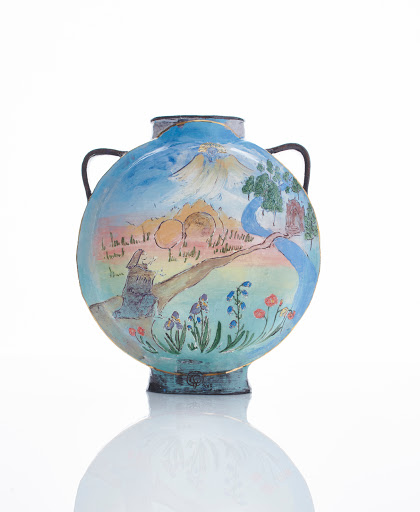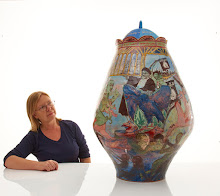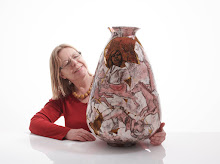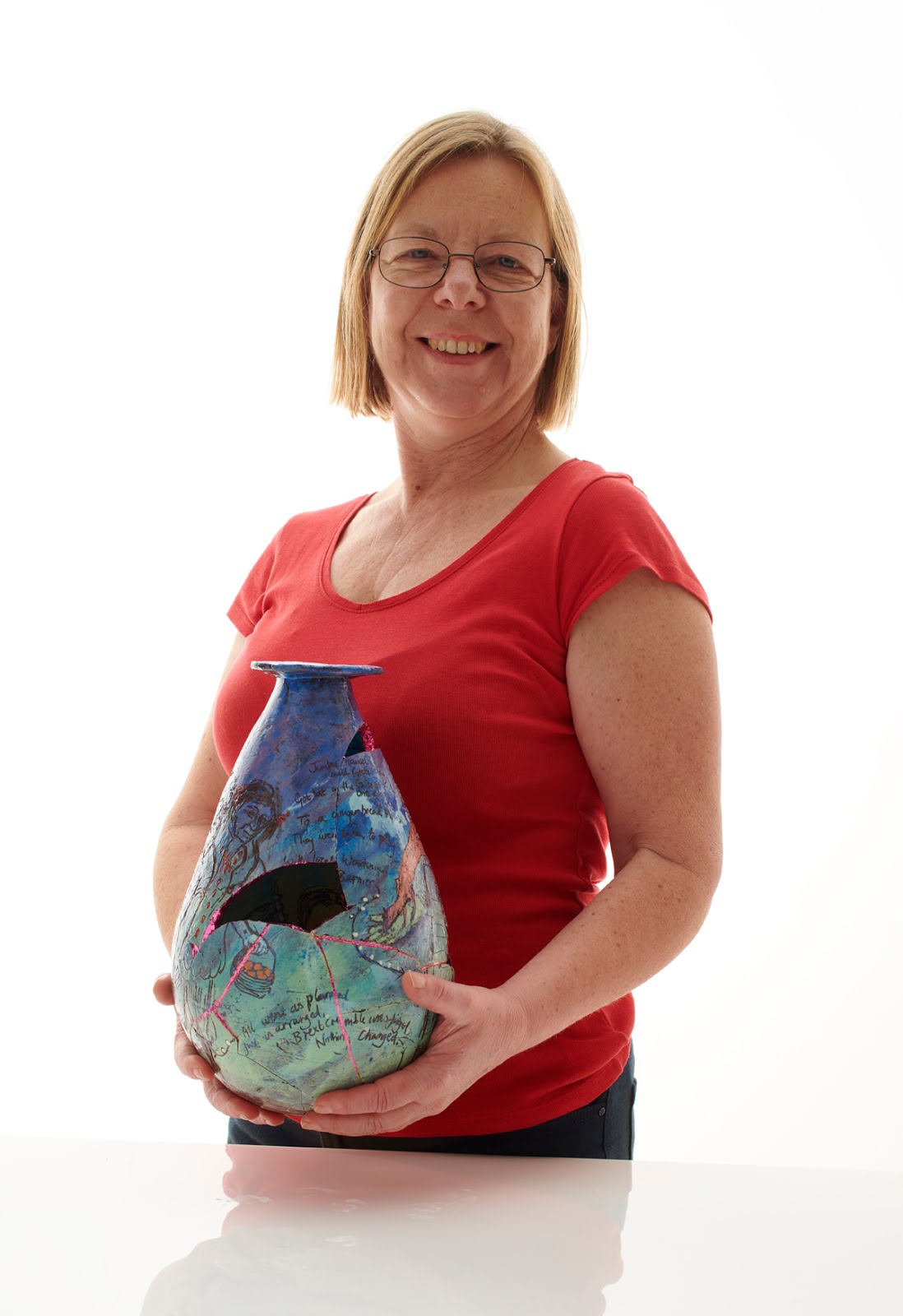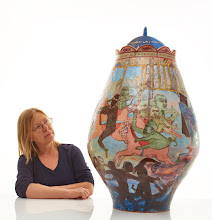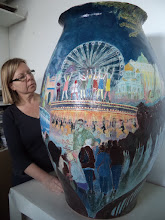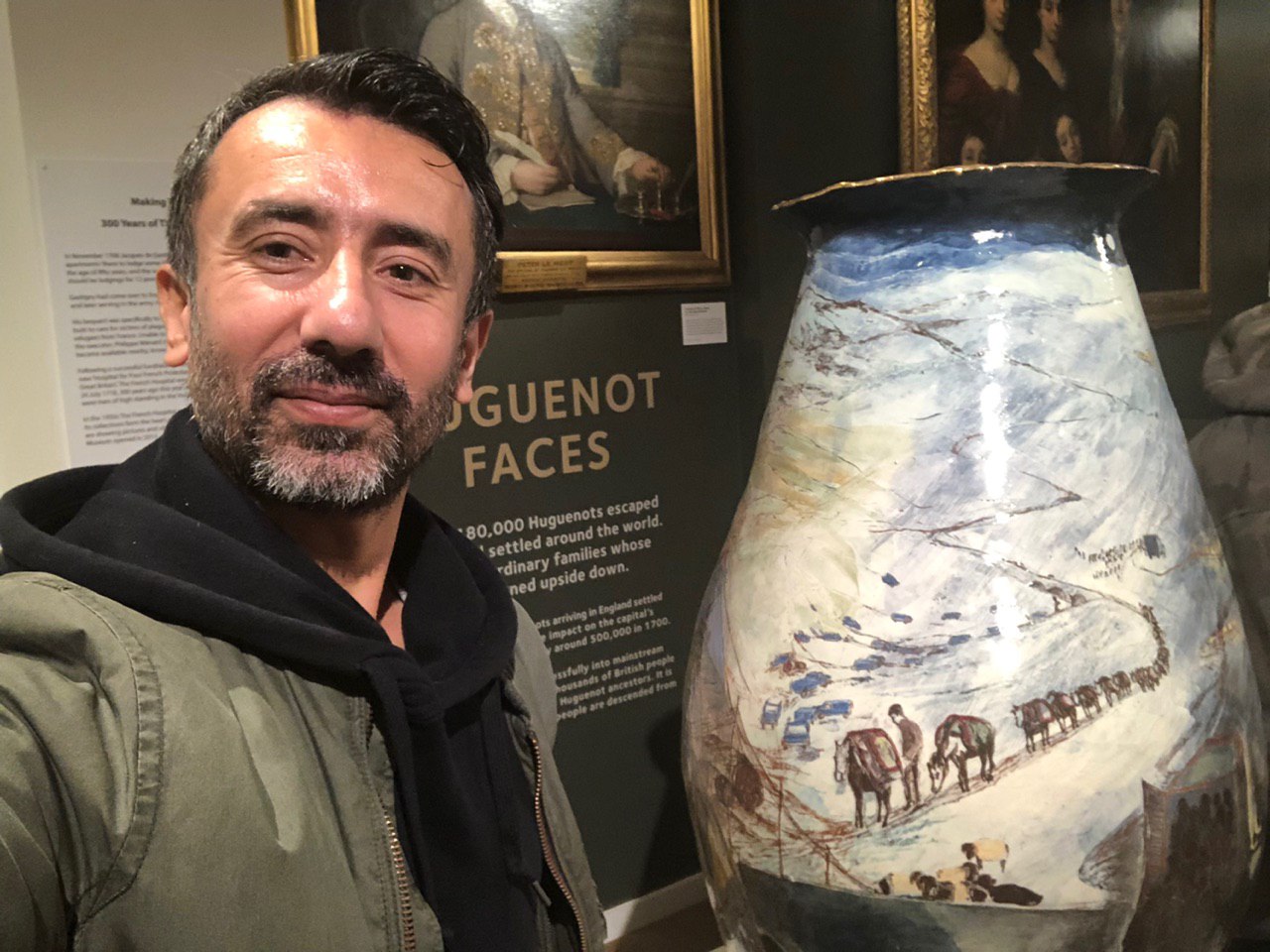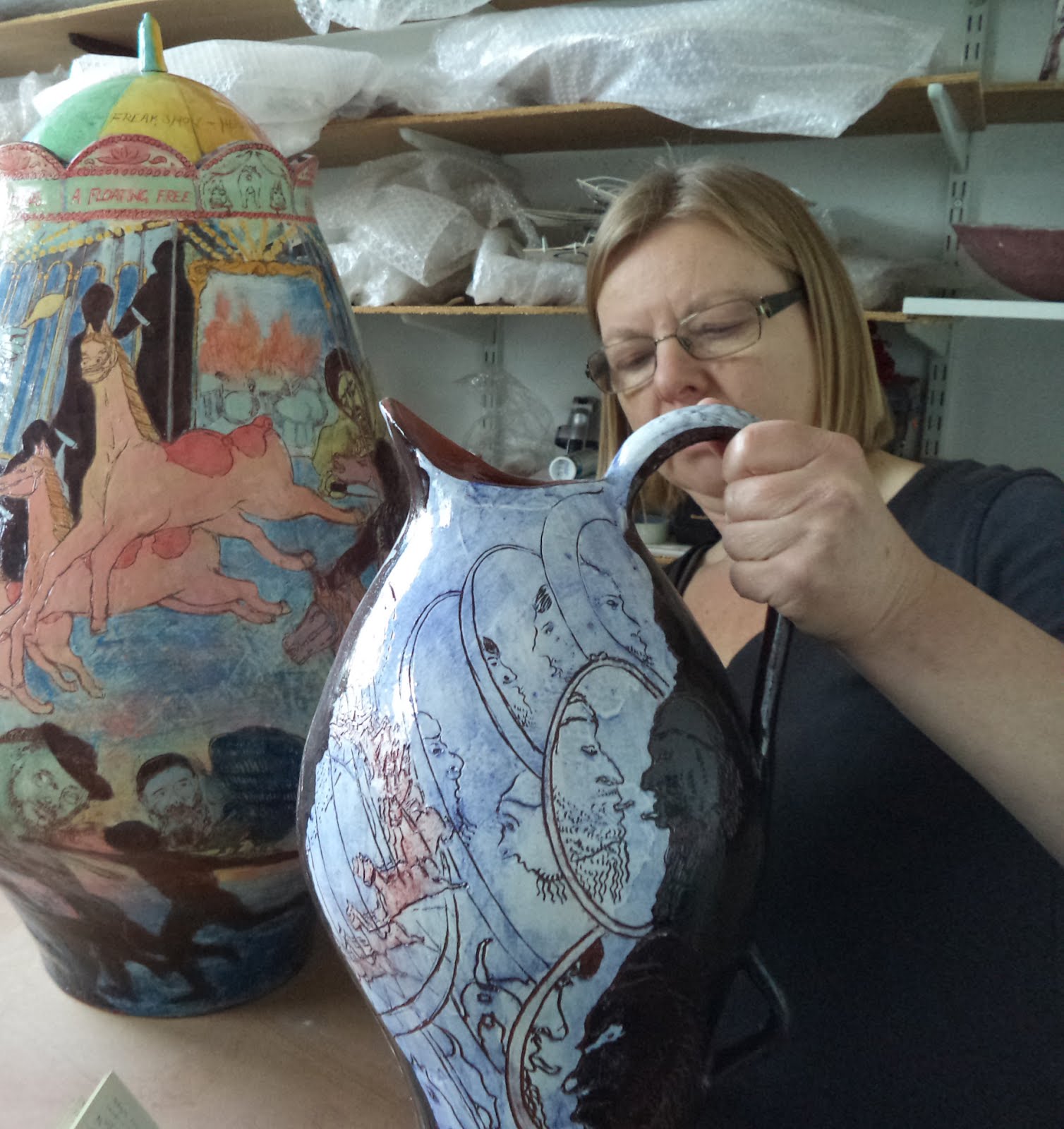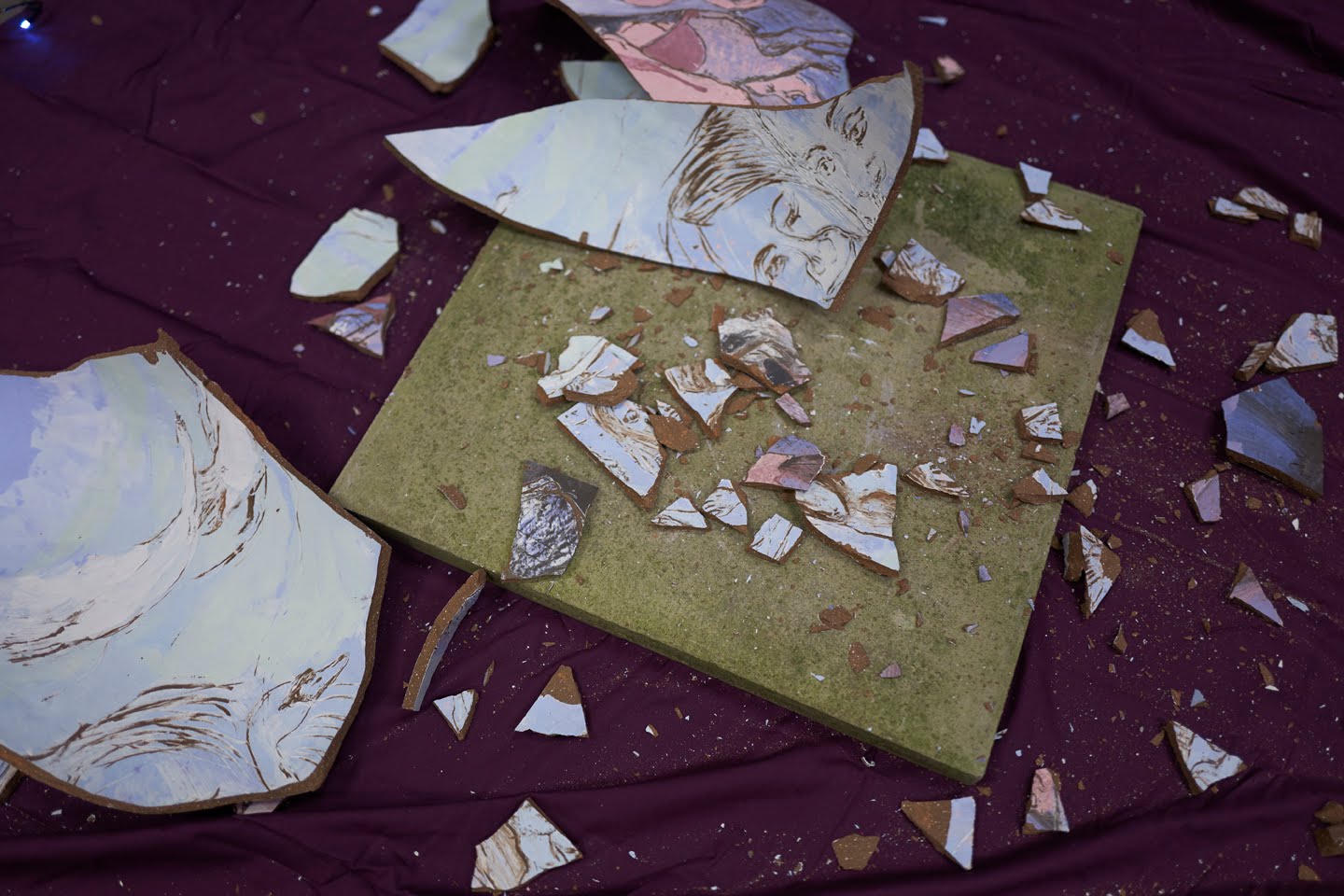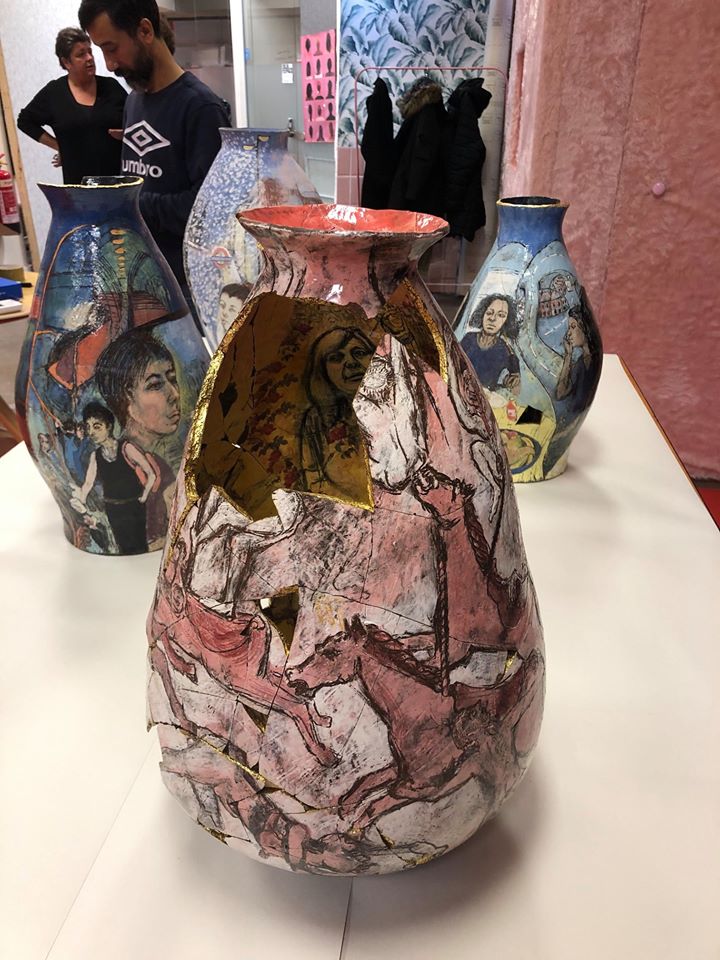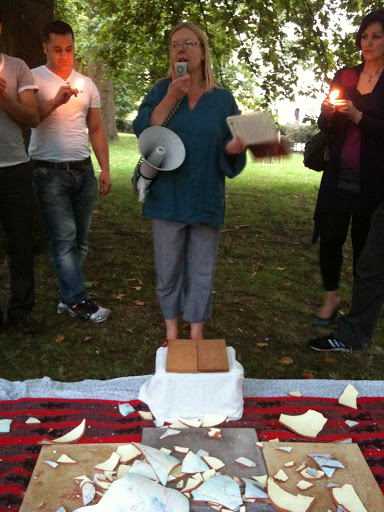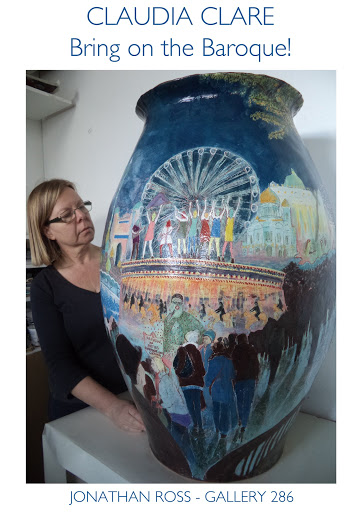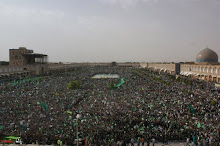Monday 14 December 2009
Some Reflections On The British Ceramic Biennial
BCB: Some Reflections On Fresh And Award Winners
I was invited to talk about this blog at a forum organised by the National Association for Higher Education in Ceramics, (NACHE). The intention, as far as I could discern, was to discuss the future of Ceramic education and NACHE’s relationship to it. The only thing I can tell you is that it looks likes it will now have some student representation and that it may well broaden out to include secondary school education. While I was there, however, I was able to have a good look at the Award Winners show and a quick look at Fresh.
The dominant theme of the AWs was undoubtedly pathos, or rather PATHOS – almost overwhelmingly so at times. It was appropriate but bizarrely inconsistent. While half of the work said, ‘I’m in mourning,’ the other half said, ‘Well I couldn’t give a monkey’s. I’m just continuing to reproduce the same stuff I’ve made for the last 30 years,’ – pots about pots and pots about material. Nothing wrong in that you might think and, indeed, there isn’t, it just looked like the selectors couldn’t decide what to do – have a show with a narrative, one which they’d forgotten to mention in advance, or choose what they fancied, mix it up and keep their fingers crossed. They probably would have got away with it if they’d had a couple more rooms to work with but, as it was, all the work was crammed into a too small space, which gave it that singularly unfortunate junk shop feel – which just added to the pathos.
The supreme winner was Neil Brownsword and deservedly so, thankfully – it always makes life easier when you find yourself agreeing with the selectors – and somewhat rare in my case – although, of course, I have no idea who else submitted images of their work, I might well have disputed the initial filter.
Brownsword chose to materialise, or rematerialise, a collection of detritus from Stoke Factories. Beautiful shreds of glazed weird bits of gubbins strewn around a plinth -the plinth was a bit unfortunate- but, as a whole, it was genuinely moving. The was a slow slide show which you couldn’t see because there was too much light, but the bits I did see had their moments- It wasn’t a slide show – it was what happens when you put the camera on a tripod and let it record whatever’s going on in front of it for a while – a series of those shot one day a week over a month or so. Some bits were shot through a wire fence which was particularly affecting.
Paul Scott also went for the pathos narrative using damaged and altered transfers on his industrially produced plates. A simple enough idea and one which communicated well.
The material-culture irony came from Connor Wilson, the ‘satire’ came from Steve Dixon who, unfortunately, decided to wrap himself in a copy of the Daily Mail, and - yes, that’s right, it’s almost too crassly embarrassing to have to write it, but he really did produce a series of pig’s heads with rosettes and little labels so we could identify exactly which politicians they were intended to represent. Moreover, he appears to have cast them from a real pig’s head which, from a distance, makes them look far too interesting to work as satire at all. Never mind. Then there was Philip Eglin – football as religion – no shit – now there’s an original idea.
We had the raku and general crustiness from David- gone- can’t remember his name, -or any of the others come to that. Ken Eastman showed that nice line in bone china, and a factory of some sort produced some SENSATIONAL paperweights, which included the campest looking owl I’ve ever seen. Fab.
Roberts – that’s his name: David Roberts. Raided his shed and brought out a couple of raku numbers he made earlier and we had those lobbed on a plinth. Oh well. Someone had to I s’pose.
Natasha Daintry produced hundreds of little – um- things- like over-sized thimbles in different colours and set them out in colour order and disorder. Looked like quite an interesting game for a particularly introspective, overly fastidious child. I quite liked it. Jacob van de Beugel was next to her with a series of thoroughly unpleasant bottles. I mean just because you’re a thrower of things unglazed doesn’t mean everything has to be brutally ugly. I think he trained with Julian Stair at one stage though. Looks like he’s absorbed all the brutalism and then turned it into multiples.
I didn’t, alas, get much sense of the architectural presentations. Sliponline have covered those and everything else in some detail with endless pictures, so best thing is to tune into them and watch the show. Then you can ignore everything I’ve said and decide for yourself.
Fresh was brilliant. Feezing cold but brilliant. It was in a disused factory workshop. I guess it’s almost inevitable that new grad shows are going to be more enjoyable than a show made up of largely very established makers because it’s not freighted with all sorts of expectations or irritations that have already been developed. Fresh, overall, had a strong sense of materiality and of the ‘place’ of ceramics in society and material culture, mainly the former though. Again, Sliponline have the pictures so that’s going to be the best place to have a good look if you didn’t get to see the show.
I’ve just remembered I missed out Halima Cassell and Clare Twomey. This is because they were easily missed. Their works were hidden, like a treasure hunt one had to stumble across them by accident. Cassell’s were perched on a ledge high above the main show and Towmey’s was hidden in gallery above the main gallery, glassed in as though it had an infectious disease – it was her jasper-ware dust again so it probably did. It’s one the best things I’ve seen her do in ages and ages. Quite creepy and theatrical. Miss Haversham may have got dressed and departed from the V&A but now we know she came to Stoke and created some kind of mayhem over the dining room table. Very literary and 18th Century – cinematic as well as theatrical.
Looking down on Cassell’s work from on high worked quite well, you really got a sense of their intricacy and also of their architectural ancestry. Her work is derived from the geometric patterns in Islamic architecture and was originally executed in brick clay – much of it, I think, still is.
Brownsword showed a film at the forum which was a sort of eulogy to an abandoned clay pit – well not quite. It was side-splitting and, from the point of the view of the film maker was clearly meant to be. Brownsword, who ‘played a starring role,’ gamely went along with it – pointing out that it was filmed like a western – but I’d say, very obviously a spoof on a western. It had that daft, hard bitten, macho pioneering-movie quality to it, the ones filmed in period costumes with endless shots of brave suffering people squelching through inhospitable landscapes in unsuitable carriages with exhausted horses, with lots of soupy music and tragic but brave moments.
My hunch is that the other two, two immensely earnest Scandinavian artists, may not have thought of what they were doing as quite so hilariously funny. They and NB were in this pit making it into a giant work of landscape art. Just watching the woman ramming her knees and jarring her spine into the not very yielding cold wet clay made me almost cry with the back pain that was coursing through me at the time. I hope I never have to watch anyone being such a bloody idiot again. Why, oh god why, do so many potters / makers think they have to act macho? I just don’t get it. As if the wholly unacknowledged derivation of Asger Jorn and Noguchi weren’t irritating enough – and let’s face it, Jorn was irritating enough to begin with.
There was much much more to see in Stoke and the first BCB was a fine tribute to that city’s achievements. I’ve said more than enough now but there is plenty more to be said. I have merely scratched the surface. I hope much more will be said and that much will be learnt to take forward to the next Biennale. There was some talk of the British Ceramics Biennale moving to other cities – perhaps – but I’d be happy for it to stay in Stoke for a while yet. It’s a weird place, but it kind of works.
Friday 11 December 2009
Some Notes From A Prolonged Absence - Getting Ready To Continue
This has been a pronged absence. I’ve been showing Shattered and nursing the most severe, vicious and unforgiving episode of sciatica I’ve ever had. It is this that has prevented me from writing. I couldn’t sit down long enough to write anything, still less concentrate on anything I might want to write.
So – how do I now squeeze everything into one small post in preparation for continuing? Well, firstly by providing two excellent links.
The first, Potkin Azarmehr’s blog, For a Democratic Secular Iran. For Peace and Prosperity in the Middle East has to be the best coverage in English of events in Iran at the moment, - so for readers interested in catching up on that check it out.
The Second is Sliponline; produced by
Eleanor Snare and Alexander Archer-Todde who are writing lucidly, comprehensively and robustly about ceramics and, in particular, have some excellent coverage of the first British Ceramics Biennale, (BCB), in Stoke on Trent.
I was going to write a post about Grayson Perry’s show at Victoria Miro, ‘The Walthamstow Tapestry,’ but pain prevented that and so too did the show itself. It just wasn’t up to his usual standard. It really lacked energy. Now this may just be a projection of mine. It was a huge effort to get there, and I’d hoped for something that’d make be glad to be alive, which his work usually does, but he seemed bored. Even the tapestry was predictable. A great idea, but the idea was better than the result, which looked like he was just going through the motions. True it’s not handmade so cant rely on the weird irregularities that occur when things are so produced, but that wasn’t the main problem – it was just too simple, nothing to surprise I suppose. Maybe this is the cost of fame – we get to know someone’s work and their way of working almost too well, so they couldn’t surprise even if they wanted to. I suspect another reason though. I think the pots were quite old and rejected in the past, just brought in for the show. I suspect that the tapestry is just a way of living up to the demands of the Perry Market. I have a hunch that the real Perry work occurred elsewhere, around the same time, at a fashion show he did at - I think it was St. Martin’s college, part of University of the Arts, London. I’d love to know what that was like because I think that’s where his spirit went. Hope so anyway. Otherwise I really will get depressed.
So – how do I now squeeze everything into one small post in preparation for continuing? Well, firstly by providing two excellent links.
The first, Potkin Azarmehr’s blog, For a Democratic Secular Iran. For Peace and Prosperity in the Middle East has to be the best coverage in English of events in Iran at the moment, - so for readers interested in catching up on that check it out.
The Second is Sliponline; produced by
Eleanor Snare and Alexander Archer-Todde who are writing lucidly, comprehensively and robustly about ceramics and, in particular, have some excellent coverage of the first British Ceramics Biennale, (BCB), in Stoke on Trent.
I was going to write a post about Grayson Perry’s show at Victoria Miro, ‘The Walthamstow Tapestry,’ but pain prevented that and so too did the show itself. It just wasn’t up to his usual standard. It really lacked energy. Now this may just be a projection of mine. It was a huge effort to get there, and I’d hoped for something that’d make be glad to be alive, which his work usually does, but he seemed bored. Even the tapestry was predictable. A great idea, but the idea was better than the result, which looked like he was just going through the motions. True it’s not handmade so cant rely on the weird irregularities that occur when things are so produced, but that wasn’t the main problem – it was just too simple, nothing to surprise I suppose. Maybe this is the cost of fame – we get to know someone’s work and their way of working almost too well, so they couldn’t surprise even if they wanted to. I suspect another reason though. I think the pots were quite old and rejected in the past, just brought in for the show. I suspect that the tapestry is just a way of living up to the demands of the Perry Market. I have a hunch that the real Perry work occurred elsewhere, around the same time, at a fashion show he did at - I think it was St. Martin’s college, part of University of the Arts, London. I’d love to know what that was like because I think that’s where his spirit went. Hope so anyway. Otherwise I really will get depressed.
Subscribe to:
Posts (Atom)
